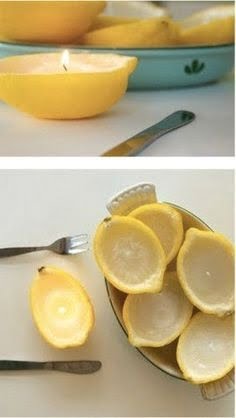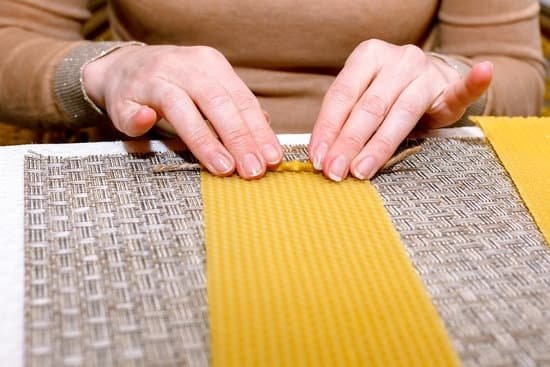Candle making is both a popular hobby and a thriving business, but achieving the perfect candle requires attention to detail. One crucial aspect that often goes overlooked is the amount of wax needed for the candle. The quantity of wax used not only affects the size and appearance of the finished product but also impacts its burn time and fragrance throw. Therefore, understanding how much wax is needed for making a candle is essential for crafting high-quality candles.
The volume of wax required depends on various factors, including the type of wax being used, the size of the candle vessel, and the desired fragrance strength. Different types of waxes have distinct densities and melting points, which means they occupy different amounts of space when melted. Additionally, larger candle vessels require more wax to achieve an even burn while smaller vessels can be filled with less wax.
Calculating the proper amount of wax is an art that requires careful consideration. Using too little wax may result in an uneven burn and a shorter overall burn time. On the other hand, using too much wax can lead to excessive heat that can damage or shatter the candle vessel. Furthermore, properly measuring out the required quantity of wax ensures that there is enough space within the container for adding fragrance oils or other additives.
In this article, we will delve into all aspects related to determining how much wax is needed for making a candle. We will explore different types of waxes available in the market and their characteristics. Additionally, we will discuss factors that should be considered when selecting the appropriate type of wax for your specific project.
Finally, we will provide step-by-step instructions on calculating the precise amount of wax needed based on container size and desired fragrance strength. So grab your scale and let’s get started on creating beautiful candles with just the right amount of wax.
Understanding the Different Types of Wax
When it comes to candle making, choosing the right type of wax is crucial. There are various types of wax available in the market, each with its own unique qualities and characteristics. Understanding these different types of wax will help you determine which one is best suited for your specific candle making needs.
One of the most common types of wax used for candles is paraffin wax. Paraffin wax is derived from petroleum and is known for its affordability and versatility. It has a low melting point, which makes it easy to work with and allows for faster candle production. However, paraffin wax may produce more soot compared to other waxes and is not as eco-friendly.
Another popular option is soy wax, which is made from soybean oil. Soy wax has gained popularity in recent years due to its renewable and sustainable nature. It burns cleaner than paraffin wax, producing minimal soot and longer burning times. Soy candles also have a stronger scent throw, allowing for a more fragrant experience. However, soy wax tends to have a lower melting point than paraffin wax, which can affect its performance in hotter environments.
Beeswax is another natural option that has been used for candle making for centuries. Beeswax candles have a distinct honey-like scent when burned and produce very little soot compared to other waxes. They also have a long burn time and emit a warm, golden light. However, beeswax can be more expensive than other types of wax, making it less commonly used in mass-produced candles.
| Types of Wax | Qualities/Characteristics |
|---|---|
| Paraffin Wax | Affordable; versatile; low melting point; produces more soot; not eco-friendly. |
| Soy Wax | Renewable; sustainable; cleaner burn; longer burning time; stronger scent throw; lower melting point. |
| Beeswax | Natural; minimal soot; long burn time; honey-like scent; expensive. |
These are just a few examples of the different types of wax available for candle making. Other options include palm wax, coconut wax, and vegetable-based waxes. Each type has its own unique properties, and it is important to consider factors such as burn time, scent throw, and sustainability when selecting the right wax for your candles. Experimenting with different types of wax can also lead to new discoveries and creative candle making techniques.
Selecting the Right Wax Type for Your Candle
When it comes to making candles, selecting the right wax type is crucial as it can greatly impact the quality and performance of your finished product. There are several factors that you should consider when choosing the appropriate wax for your candle-making project.
One important factor to consider is the melting point of the wax. Different types of wax have different melting points, which determine how well the candle will burn. For example, paraffin wax has a lower melting point and is great for container candles, while beeswax has a higher melting point and is ideal for pillar candles.
Another factor to consider is the scent throw of the wax. Some waxes have a better scent throw than others, meaning they are better at releasing fragrance into the air when burned. Soy wax, for instance, is known for its excellent scent throw, making it a popular choice for scented candles.
Additionally, you should also take into account the appearance and texture of the wax. Some waxes have a smooth and creamy texture, while others have a more rustic or crystalline appearance. This can affect both the aesthetics and functionality of your candle.
| Wax Type | Melting Point | Scent Throw | Appearance/Texture |
|---|---|---|---|
| Paraffin Wax | 120-160°F | Fair to Good | Smooth and Creamy |
| Soy Wax | 120-180°F | Excellent | Smooth and Creamy |
| Beeswax | 144-149°F | Good to Excellent | Rustic, Natural |
| Palm Wax | 145-150°F | Fair to Good | Mottled, Crystalline |
By considering these factors and understanding the characteristics of different types of wax, you can make an informed decision when selecting the right wax for your candle. Remember that experimenting with different waxes can also lead to unique combinations and creative candle-making possibilities.
Step-by-Step Guide
When it comes to making candles, one of the most important aspects to consider is the amount of wax needed. Getting the right quantity of wax ensures that your candle burns properly and lasts for a desired amount of time. In this step-by-step guide, we will walk you through the process of calculating the amount of wax required for your candle.
Gather Your Supplies
Before you begin calculating the amount of wax needed, make sure to gather all the necessary supplies. This includes the candle container, wick, fragrance, dye (if desired), and a measuring scale. Having everything ready beforehand will make the process much smoother.
Determine the Volume of Your Container
The first step in calculating the amount of wax needed is to determine the volume of your candle container. You can do this by filling it with water and then pouring that water into a measuring cup or by using mathematical formulas if your container has a regular shape. Make sure to measure in ounces or milliliters, as these are commonly used units in candlemaking.
Calculate Wax Needed
Once you know the volume of your container, you can calculate how much wax is required. As a general rule of thumb, multiply the volume by 0.9 to account for any space that will be left empty at the top of the container once your candle is poured. This will give you an estimate on how much wax to melt.
It’s worth noting that different types of waxes have different densities and melting points, so weights can vary even if volumes are similar. For example, soy wax typically has a lower melting point than paraffin wax and therefore requires less weight for the same volume.
By following this step-by-step guide and accurately calculating the amount of wax needed for your candle, you can ensure that you have enough wax to create a beautiful and long-lasting result. Remember to always double-check your calculations and consider any adjustments based on the specific wax type you are using. With practice, you will become more familiar with the process and be able to create candles with precision and confidence.
The Wax-to-Fragrance Ratio
The scent of a candle is one of the key factors that can enhance the ambiance and create a pleasant atmosphere in any space. Achieving the perfect scent requires careful consideration of the wax-to-fragrance ratio during the candle making process. This section will guide you through understanding this ratio and how to achieve the desired fragrance for your candles.
Understanding the Wax-to-Fragrance Ratio
The wax-to-fragrance ratio refers to the proportion of fragrance oil that should be added to a specific amount of wax during candle making. This ratio is crucial as it determines the strength of the scent in the final product. Adding too little fragrance oil will result in a weak scent, while adding too much can lead to issues such as poor burning performance or an overpowering fragrance.
To determine the appropriate wax-to-fragrance ratio, consider factors such as the type of wax being used, its melting point, and personal preference for scent intensity. Different waxes have different absorption rates and abilities to hold onto fragrances, so it’s important to do some research or consult with experienced candle makers to find recommended ratios for specific waxes.
Calculating the Wax-to-Fragrance Ratio
Calculating the wax-to-fragrance ratio involves determining how much fragrance oil should be added based on the weight or volume of wax being used. A common starting point is using 6% fragrance load for most waxes, although this can vary depending on personal preference and type of wax.
To calculate this ratio, multiply the weight or volume of your chosen wax by 0.06 (for a 6% fragrance load). For example, if you are using 1 pound (16 ounces) of soy wax, multiply 16 ounces by 0.06 to get 0.96 ounces of fragrance oil that should be added to achieve a balanced scent.
It’s important to note that some fragrances may require a lower or higher ratio depending on their strength. Stronger fragrances may require a lower percentage, while lighter fragrances may need a slightly higher percentage to achieve the desired scent throw. It’s recommended to start with the suggested ratios and adjust accordingly based on individual preference and testing.
Achieving the perfect scent in your candles requires careful consideration of the wax-to-fragrance ratio. By understanding this ratio and calculating it accurately, you can create candles that fill your space with delightful aromas. Experimentation and testing are key to finding the ideal balance that will result in a perfect scent for your candles.
Assessing Container Size
When it comes to candle making, one often overlooked factor in determining the amount of wax needed is the size of the container. Assessing the container size is essential to ensure that you use the right amount of wax for your candle, preventing overflow or underfilling. Matching the wax quantity to the candle vessel is crucial for achieving a beautifully crafted and long-lasting candle.
The first step in assessing container size is to measure the volume of your candle vessel. This can be done by filling it with water and then pouring that water into a measuring cup. Alternatively, you can refer to any measurements provided by the manufacturer if available. Once you have determined the volume of your container in ounces or milliliters, you can use a simple formula to calculate the amount of wax needed.
The general rule of thumb is that you will need approximately one ounce (30 grams) of wax per every cubic inch (16 cubic centimeters) of container space. However, keep in mind that this is a rough estimate and may vary depending on other factors such as fragrance or dye additions. It’s always a good idea to have some extra wax on hand just in case you need to make adjustments during pouring.
Matching the wax quantity to the candle vessel not only ensures proper filling but also affects burn time and performance. Overfilling may result in spillage when lighting or uneven burning, while underfilling can lead to tunneling and wasted wax. By taking into consideration the container size, you can create candles that not only look aesthetically pleasing but also provide an optimal burn experience for yourself or your customers.
Common Mistakes to Avoid
One of the common mistakes that candle makers often make is overestimating or underestimating the amount of wax needed for their candles. This can lead to wasted materials and time, as well as inconsistent results. To ensure a successful candle making process, it is important to have a good understanding of how much wax is needed and to avoid these common mistakes.
Firstly, overestimating the wax needs can result in excessive leftover wax that may go to waste. This not only increases the cost of producing candles but also adds unnecessary waste to the environment. On the other hand, underestimating the amount of wax needed can lead to incomplete candles with unappealing uneven surfaces or even having insufficient wax to fill the container completely.
To avoid these mistakes, it is crucial to accurately calculate the amount of wax required for each candle. One way to determine this is by using a wax calculator or following a specific formula based on factors such as container size and desired candle height. These calculations should take into consideration factors like overflow space and shrinkage during cooling.
To assist in determining the proper amount of wax, there are some general guidelines to follow. For container candles, it is recommended to fill them about 80% full with melted wax for a visually appealing finished product. For pillar or votive candles, it is advisable to pour slightly more melted wax than actually necessary as there will be some decrease in volume once cooled and hardened.
Eco-Friendly Wax Options
When it comes to making candles, not only is the quantity of wax important, but also the type of wax used. In recent years, there has been a growing interest in eco-friendly and sustainable alternatives to traditional paraffin wax. This section will explore some of these options and highlight their benefits.
One popular eco-friendly wax option is soy wax. Made from soybean oil, soy wax is a renewable resource that burns cleanly and slowly. It has a lower melting point than paraffin wax, allowing for longer burning times. Additionally, soy wax is biodegradable and easy to clean up with just soap and water.
Another sustainable alternative is beeswax. Beeswax is produced by bees and has been used for centuries in candle making. It has a natural sweet scent and burns without releasing toxins or soot. Beeswax candles have a long burn time and give off a warm, golden glow.
Palm wax is another environmentally friendly option to consider. It is derived from sustainably harvested palm fruits and has a unique crystal-like appearance when solidified. Palm wax candles have a long shelf life, excellent fragrance retention, and burn evenly.
Using eco-friendly waxes not only reduces the environmental impact of candle making but also provides consumers with healthier options. By exploring sustainable alternatives such as soy wax, beeswax, and palm wax, candle makers can create beautiful candles while also caring for the planet.
- Soy Wax
- Beeswax
- Palm Wax
Conclusion
In conclusion, understanding the importance of wax quantity in candle making is crucial for achieving success in this art form. By selecting the right wax type, calculating the appropriate amount of wax, and considering factors such as fragrance ratio and container size, candle makers can ensure that their candles burn evenly and release a pleasant aroma.
When it comes to selecting the right wax type, it is important to consider factors such as melting point, scent throw, and eco-friendliness. Each candle maker has their own preferences and requirements, but it is essential to choose a wax that suits the intended purpose of the candle.
Calculating the amount of wax needed for a candle involves careful consideration of various factors such as container size and desired burn time. Additionally, maintaining the proper ratio between wax and fragrance is crucial for achieving an ideal scent throw. Overestimating or underestimating these quantities can lead to disappointing results.
Lastly, exploring eco-friendly wax options is not only beneficial for the environment but also provides an opportunity to create unique candles with sustainable materials. Alternative waxes such as soy wax or beeswax offer environmentally friendly alternatives that still provide excellent burning characteristics.
Frequently Asked Questions
How do I calculate how much wax I need for a candle?
To calculate how much wax you need for a candle, you need to consider the volume or weight of wax required per candle formulation. The exact amount can vary depending on various factors such as the size and shape of the container, desired burn time, and type of wax being used.
One common approach is to calculate the wax needed based on a percentage relative to the container’s volume. For example, if your container holds 10 oz of liquid, and you use a 7% rule (which means using 7% of the container’s volume in wax), you would need 0.7 oz (10 oz x 0.07) of wax for one candle.
How many 8 oz candles will 10 lbs of wax make?
To determine how many 8 oz candles can be made from 10 lbs of wax, we need to convert both measurements into the same unit – either all ounces or all pounds. Since there are 16 ounces in one pound, we find that there are a total of 160 ounces in 10 lbs (10 lbs x 16 oz/lb = 160 oz).
Assuming each candle requires exactly 8 oz of wax, dividing the total amount available by the amount needed per candle gives us the answer: 160 oz / 8 oz = 20 candles.
How many candles will 12 oz of wax make?
Calculating how many candles can be made from a given amount of wax depends on knowing the quantity needed per candle. If each candle requires exactly 12 oz of wax, then dividing the total amount available by the amount needed per candle will give us our answer: for example, if we have precisely 12 oz of wax, we would be able to make just one candle with that quantity.
However, keep in mind that factors like wastage during melting and pouring might influence this number slightly depending on your specific process and preferences.

Welcome to my candle making blog! In this blog, I will be sharing my tips and tricks for making candles. I will also be sharing some of my favorite recipes.





